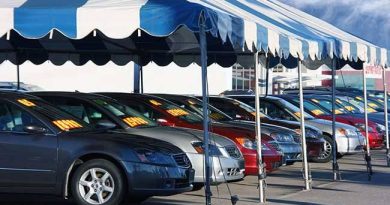Need-To-Know: A Guide To Electric Scooter Batteries
Introduction
Electric scooters continue to rise up the ranks of the most preferred vehicles. A number of good reasons, including improved health as well as eco-friendliness, contribute to the trend. Do you know what drives an electric scooter, though? Much like the mitochondria in the human cell, the battery is the powerhouse of an electric scooter.
From motors to lights to LED displays, all the power an electric scooter needs comes from its battery. Lithium-ion and lead-acid batteries comprise most e-scooter batteries. The former finds its way into most scooters due to its durability and energy density. However, the majority of low-cost children’s scooter models utilize lead-acid batteries.
Continue reading to learn additional factors about electric scooter batteries.
3 Common Types of Electric Scooter Batteries
Nickel-Metal Hydride Batteries
Commonly referred to as NiMH, these batteries have a high energy density that makes them a common component in consumer electronics. That’s because they effectively store a charge. The negative aspect of nickel-metal hydride batteries, however, is long charge times. They can take up to 12 hours to charge. In addition, they suffer voltage reduction in high temperatures.
Sealed Lead-Acid Batteries
Uncommon in adult e-scooters, sealed lead-acid batteries can be seen more often in cars. Their size, weight, and slow charging render them unsuitable for e-scooters. On the plus side, they store energy efficiently and are inexpensive.
Lithium-Ion Batteries
Lithium-ion batteries find their home in the gadgets we rely upon daily — smartphones, laptops, and even your e-scooter use these batteries. These lightweight, rechargeable batteries offer immense energy density for their size. Additionally, lithium-ion batteries lose roughly 5% of their electrical charge each month but retain it for hours at a time. In comparison, nickel-metal hydride batteries experience a monthly loss of roughly 20%.
Lithium-ion batteries come in a variety of subcategories:
- Lithium manganese oxide (IMR, LMO, and Li-manganese)
- Lithium manganese nickel (INR and NMC)
- Lithium nickel cobalt aluminum oxide (NCA and Li-aluminum)
- Lithium nickel cobalt oxide (NCO)
- Lithium cobalt oxide (ICR, LCO, and Li-cobalt)
- Lithium iron phosphate (IFR, LFP, and Li-phosphate)
Each of these lithium batteries presents advantages and disadvantages. But our concentration will be on Lithium manganese nickel.
Lithium Manganese (INR, NMC)
Cobalt, nickel, and manganese comprise lithium-ion batteries. In this combination, manganese lowers the battery’s resistance while raising its current output. The safest version of the lithium-ion battery, they’ve become the standard for electric scooters.
Why We Use Lithium-Ion Batteries
Lithium-ion batteries provide the best combination of safety, energy density, and charge retention. This battery is appropriate for an electric scooter in primarily because it is safe since its temperature does not significantly rise even with high current output.
Electric Scooter Battery Specifications
The parameters of a scooter battery include more than just numbers. It affects the battery’s performance, and consequently, the scooter’s performance. The three key characteristics or specifications of a battery to watch out for are:
- Voltage
- Charge
- Capacity
What Else To Look For In Electric Scooter Batteries
Although significant, charge, voltage, and capacity aren’t the only requirements to account for when choosing a battery. The following characteristics influence the performance of your lithium-ion battery-powered e-scooter:
- Battery Packs
- Voltage Sag
- Battery Management System
- C-rate
- Battery Brands
Are Electric Scooter Batteries Waterproof?
Some electric scooters have an IP rating, meaning they’re somewhat water-resistant but not waterproof. However, to varying degrees, their IP rating enables them to withstand water splashing. Regardless of an electric scooter’s IP classification, manufacturers warn against riding through puddles or rain.
Battery’s susceptibility to water forces manufacturers to pay close attention to them. Some models utilize waterproof protection with a high IP rating. However, the safest rule of thumb to adhere to is to assume your battery’s IP rating is the same as your scooter’s unless it is specified otherwise. If you’re not certain of the offered protection, avoid water altogether just to be safe.
How Long Do Electric Scooter Batteries Last?
An electric battery scooter should operate at its best for between 300 and 500 charge/discharge cycles. This would provide between 3,000 and 10,000 miles, to put things into perspective. The charge cycle and mileage could be significantly reduced, though, by inappropriate use and administration. Managing in this context does not mean “petting your batteries.” Because the battery management system already performs the majority of the work, it just means doing the bare minimum to prolong battery life.
The following factors affect the longevity of your electric scooter’s battery:
- The way you ride your scooter
- The total weight the scooter carries
- Service and maintenance
- Frequency of use
- Water exposure
- Storage conditions
Conclusion
Often overshadowed, batteries are the real power behind electric scooters. Due to their high energy density, durability, and safety, lithium-ion batteries power more commutes than any other type of battery. When purchasing a scooter, pay attention to the battery’s parameters, including its charge, voltage, and capacity. Take this guide with you as you choose the best battery to power your commute.




